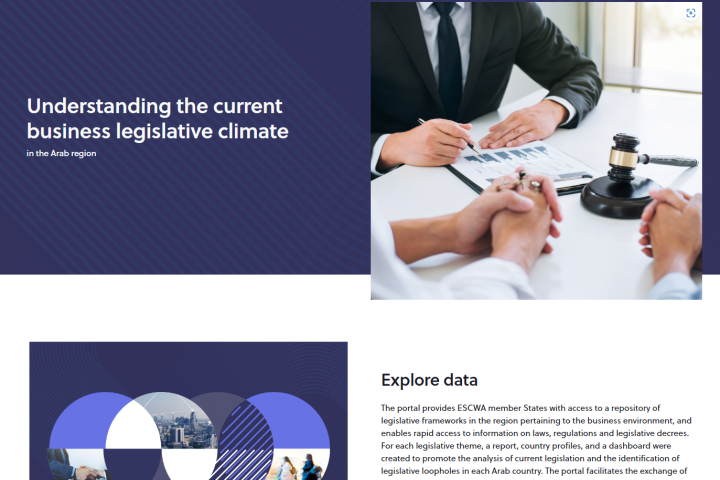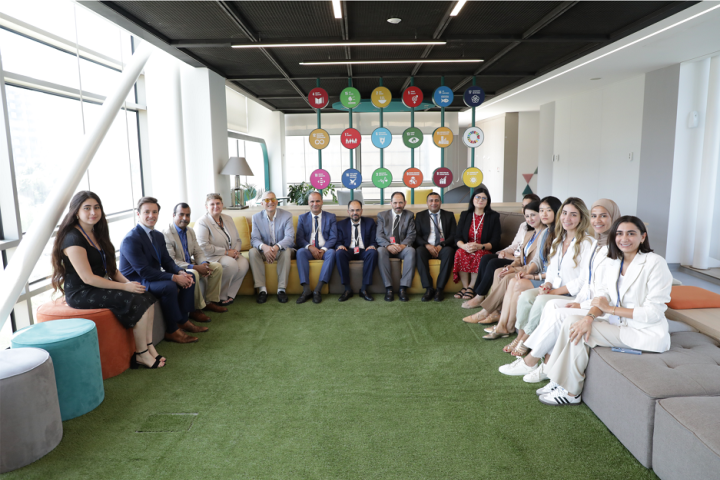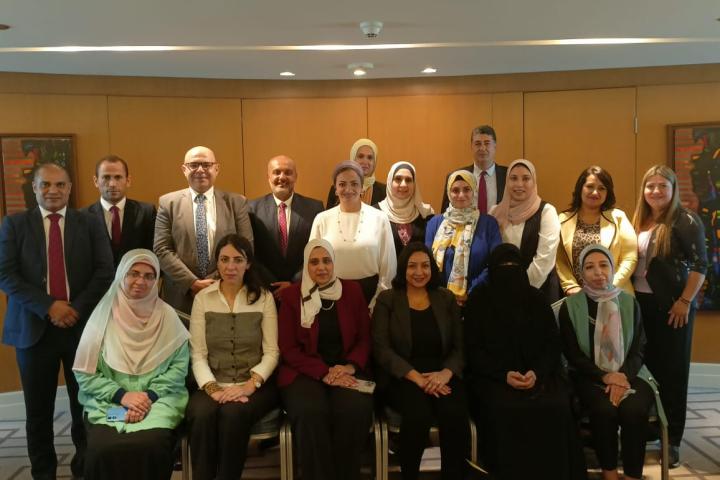Beirut, 29 December 2020--The Arab region faces two economic scenarios for 2021: an optimistic one projecting a growth rate of 3.5% and one that is less optimistic, limiting growth prospects to 2.8%. The actual path will hinge on the ability of Arab countries to cope with the COVID-19 pandemic, which has caused losses of about $140 billion for the region, resulting in an estimated -3% growth contraction in 2020.
These figures and more were released today by the United Nations Economic and Social Commission for Western Asia (ESCWA) in the 2019-2020 issue of its annual “Survey of Economic and Social Developments in the Arab Region”.
“The report warns that, although growth is expected to be positive in both scenarios, it will not be enough to yield decent job opportunities. Indeed, the region’s unemployment rate is expected to rise to 12.5% in 2021. Unemployment will reach its regional high in Palestine (31%) and Libya (22%); it will exceed 21% in Jordan and Tunisia, and hover around 5.8% in Gulf Cooperation Council (GCC) countries. And, after having decreased by 50% in 2020, the region’s exports are expected to rise again by 10.4% in 2021.
“The crisis faced by the Arab region goes beyond the economic realm to encompass major social challenges,” explained Lead Author Mohamed Hedi Bchir, from ESCWA. “The region is also suffering from rising poverty, with an average rate that might reach 32% in 2021, affecting 116 million people. It is grappling with rising youth unemployment, with an average rate that might reach 27%; and with persisting gender inequality as it registers the world’s highest gender gap of 40%.”
According to the report, middle-income Arab countries are the ones expected to achieve the region’s highest growth rates, reaching 5% in the optimistic scenario and 4.1% in the less optimistic one. As for GCC countries, they will achieve growth rates ranging between 2.3% and 2.1%, and least developed ones will not record more than 0.5% or 0.4% of growth.
Bchir further underlined that the challenges facing the region require extensive efforts from Arab Governments to provide the necessary social safety nets, especially in communities hosting refugees and migrants where there is growing fear of further deterioration in living conditions due to the economic recession afflicting donor countries.
This year’s edition of the Survey focuses on debt in the Arab region, which has doubled in the past decade to reach about $1.2 trillion in Arab countries not affected by conflict, and about 80% of the gross domestic product (GDP) of Arab middle-income countries. This dire situation is due to the fact that most of the region’s countries still resort to borrowing to fund government expenditure, which has a negative impact on productivity and growth. According to the report, the situation points to weak governance, challenging States to identify “how” rather than “how much” to spend.
The report also argues that, if the current debt situation persists, it will bring about a crisis that can only deepen the current socioeconomic crisis, especially in middle-income countries that will not benefit from the G20 Debt Service Suspension Initiative (DSSI) targeting low-income countries. The latter have saved about $294 million thanks to DSSI. The report thus calls for its expansion to middle-income countries, in which debt service has reached $18 billion, provided that they set a fiscal deficit ceiling to ensure debt sustainability.
***
About ESCWA
One of five United Nations regional commissions, ESCWA supports inclusive and sustainable economic and social development in Arab States, and works on enhancing regional integration.
For more information:
Ms. Maryam Sleiman, Public Information Assistant, +961-81-769-888; sleiman2@un.org
Ms. Rania Harb, Public Information Assistant, +961-70-008-879; harb1@un.org



